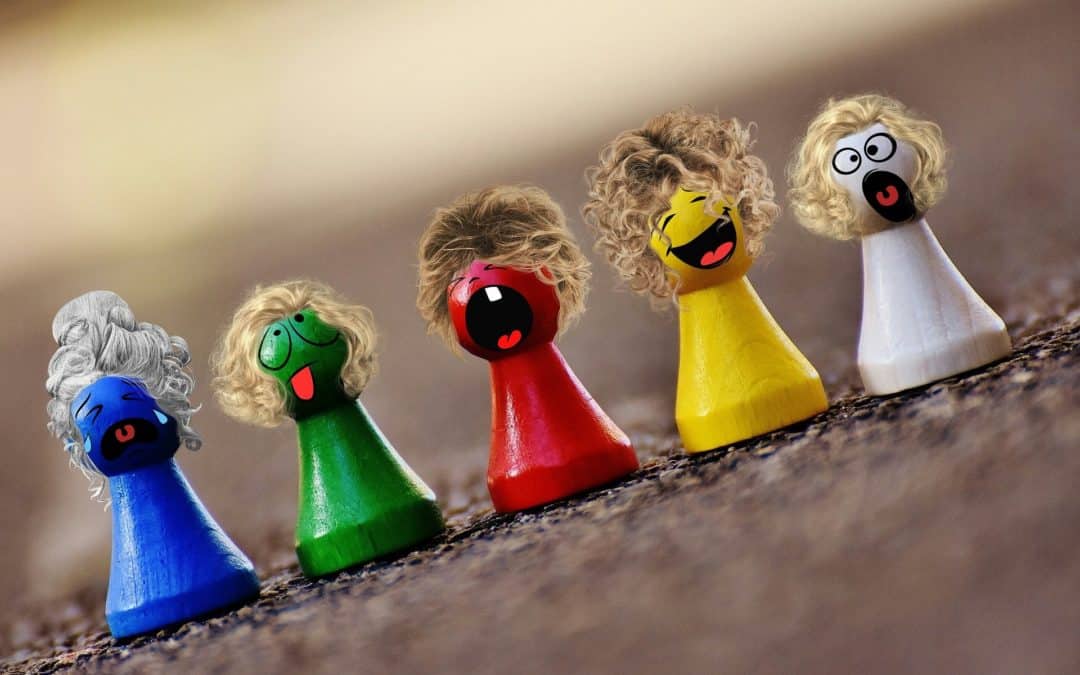On the last two Saturdays I’ve been back to the theatre with my eight year-old daughter. I say been back, as it’s the first time either of us has attended a live performance for months and months. Years since we went together.
In just two visits, we’ve seen puppetry, choreography, multiple-character storytelling from a solo performer (including being an elephant), choral singing, juggling, musical accompaniment, contexts of war, abandonment, death, flood, wilful destruction, cities ablaze, family break-up, fantasy, dreamscapes, loneliness and falling in love for the first time.
We’ve seen a happy ending and a tragic ending. We’ve been back in history and out of the human world all together. We’ve laughed and cried and, in my daughter’s words, ‘not been sure how to feel because it’s so many feelings all at once’.
This seems to me pretty remarkable when we’ve only sat in the theatre for a total of 120 minutes. Even more remarkable when for half that time, barely any words were spoken.
The contrasts have been remarkable too. One play was a performer speaking for 65 minutes with practically the whole set and a huge cast of characters (including the elephant) created through a combination of her gesture and physicality, shaping the empty space (my daughter’s favourite).
The other was five puppeteers – and it must be said, the designer, lighting designer and composer – creating a weird and wonderful fairy-tale netherworld above and below the waves through a series of abstract figures, objects, child-like figures, choral singing and narration (though probably no more than a page of text at most).
There were also the anomalies that sat outside what one might consider a ‘conventional’ narrative dramaturgy.
In the puppet show there was a period of twelve minutes where we just watched puppets move. There was a world being slowly created – so there was accumulation and growth – but there was little plot. Just visual beauty and fascination, a vertical dive into the magic of a wondrous and strange place that beguiled the audience.
In the one-person show there was a period of around fifteen to twenty minutes at the beginning where the characters and world were just set up – what I’d often pass off as a ‘runway’ scene before the story really takes off.
It was absolutely essential however for our understanding of the stakes of what came next, and for a young audience to understand the rules and conventions of the production. My daughter was captivated in these opening moments purely because somebody was telling ‘her’ a story and seemingly conjuring it out of thin air.
Afterwards we saw the play script on the bar, and she was doubly amazed that somebody had remembered the entire script – she thought they’d been improvising.
The eighteen months of multiple lockdowns, restrictions on social world and family or friends’ visits, shutting down of regular groups and meetings (Rainbows, youth theatre, simple play dates) meant my daughter and I were constantly making up role plays and stories, especially through the early part of lockdown. Part of how she coped through March to July last year was coming down the stairs dressed as a different character every day.
She’d commit fully, and that character would become the basis of a whole-house role play for much of the day.
We went out for walks in the woods or on the harbourside in Bristol, creating kingdoms ruled by Canada geese and swans where the pigeons were the rebel masses; worlds where the whole forest itself was the psyche of an ancient being who had gifted the magic of the trees to the warrior horses left behind; coastal wanders where the whole family became elemental guardians protecting villages from skulled villains and evil monkey scientists.
In the mid-part of lockdown this fell away. Home and family life as I’ve mentioned in the blog last week became gradually very different with new pressures.
My daughter discovered the online world, Minecraft, YouTube. New worlds, new constructions, different media. The live storytelling, improvisation and lived-out performances started to take a back seat.
As we watched these performances over the last two Saturdays however, I was reminded of how much joy there was in play, imagination, suggestion, sitting into worlds and letting them just ‘be’, seeing where they lead. Reminded of the eagerness for imaginations to be transported, via a simple invitation to fill the empty space with fictional universes.
Reminded of the word ‘play’ in all its definitions, and realising just how polarised my idea of ‘grown-up’ plays and ‘children’s’ plays had become.
There’s a scene I’ve been hanging onto in a treatment for the Power Station play with Forest Forge, where a load of revolutionary mussels take on a Mission-Impossible-styled strategic disabling of a water pipe leading to a power station, in order to prevent it from polluting the environment.
This is based on a true story – the water inlet pipes to Marchwood Power Station up the road from Fawley became completely clogged with mussels: the warm water was ideal breeding ground. Their colonisation shut down the entire power station and men had to go down with shovels to dig them out. Nature halting industry.
The Mussels of Marchwood are my reminder, as I move into a new first draft, to keep play at the forefront of my mind.
I want to keep thinking about fun, magic, theatricality, imagination – where images themselves can do more than words. To think more like a child. To remember how pliable, elastic and adept their instinct for play is, and how at the end of the day, organised narrative construction can go do one, if the moment in itself is inviting our imaginations to collaborate with a moment of wonder.
